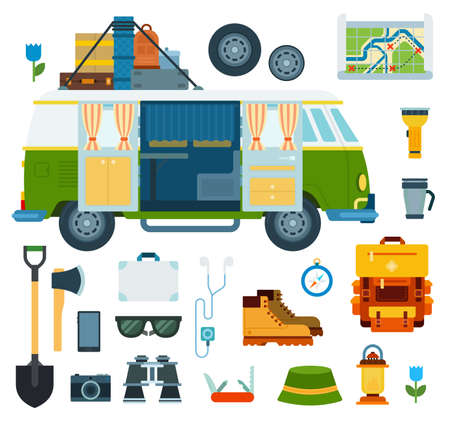1. Introduction to Tribal Camping in India
Exploring India’s tribal areas through camping offers a truly immersive experience, blending adventure with the vibrant customs of indigenous communities. From the dense forests of Chhattisgarh and Jharkhand to the rolling hills of Nagaland, Odisha, and the Western Ghats, these regions provide unique settings for camping enthusiasts seeking more than just scenic landscapes. What sets tribal camping apart is not only the untouched natural beauty but also the opportunity to witness local hospitality and age-old traditions firsthand. Whether it’s sharing a meal cooked over an open fire or participating in folk music gatherings under starlit skies, Indian tribal hospitality welcomes campers as part of the community. Across India, each tribal region showcases its own distinct charm—offering a rare blend of cultural exchange, traditional craftsmanship, and eco-friendly living. For those prepared with the right gear and an open mind, camping in India’s tribal heartlands promises unforgettable memories and authentic connections with local life.
2. Essential Gear for Tribal Camping
Embarking on a camping journey in Indian tribal regions demands thoughtful preparation, especially when it comes to equipment. The diverse terrains—from the lush forests of Chhattisgarh to the hilly tracts of Nagaland—require you to pack smart and respect local customs. Below is a curated list of essential gear that will help you blend comfort, safety, and cultural sensitivity during your adventure.
Must-Have Camping Equipment Tailored for Indian Terrains
| Equipment | Purpose | Cultural Tip |
|---|---|---|
| All-weather tent with mosquito netting | Protection from rain, humidity, and insects | Choose neutral colors to avoid attracting attention or causing offense |
| Monsoon-proof backpack & dry bags | Keep essentials dry during sudden showers | Avoid flashy designs; opt for earthy tones appreciated by locals |
| Lightweight sleeping bag & mat | Comfort in humid climates and uneven terrain | If staying in a tribal homestay, ask if bedding is provided to respect their hospitality customs |
| Sturdy trekking shoes/sandals | Navigating muddy trails and rocky paths | Remove footwear before entering tribal homes as per custom |
| Reusable water bottle & portable filter | Ensure safe drinking water access anywhere | Avoid plastic disposables; many tribes value environmental stewardship (“Swachh Bharat” spirit) |
| Traditional Indian attire (kurta-pajama, saree, or lungi) | Blending in respectfully with local communities | Dressing modestly builds trust and fosters mutual respect (“Atithi Devo Bhava”) |
| Pocket torch/headlamp with extra batteries | Essential for power-cut-prone areas and night walks | Offer to share light sources during communal gatherings; it’s a gesture of goodwill |
| Bamboo/eco-friendly utensils & thali set | Sustainable dining solution for traditional meals (often served on leaves) | Avoid using non-biodegradable cutlery; many tribes practice eco-friendly living (“Vasudhaiva Kutumbakam”) |
| Mosquito repellent (herbal preferred) | Protection against vector-borne diseases common in rural India | Herbal products are more acceptable; chemical sprays may be frowned upon for environmental reasons |
Monsoon Gear Essentials for Tribal Areas
- Poncho or Raincoat: Lightweight and easy to carry—better than umbrellas on narrow forest paths.
- Waterproof footwear: Opt for quick-drying sandals or rubber boots.
- Ziploc Bags: For storing electronics, medicines, and documents safely from moisture.
Packing Tips for Cultural Integration in Indian Tribal Regions:
- Gift small tokens: Bringing tea leaves, bangles, or simple stationery can be a nice gesture without being intrusive.
- Learnt basic greetings: A few words in the local dialect (like “Namaste” or “Jai Johar”) open doors to warm interactions.
- Avoid loud gadgets: Keep music volume low and refrain from drone use unless permitted by village elders.
Your Preparation Reflects Your Respect!
Caring about what you bring—and how you use it—shows your genuine appreciation for the people and nature you encounter. Equip yourself thoughtfully, remain flexible, and always seek guidance from local hosts. That’s the real spirit of Indian tribal camping!

3. Engaging with Tribal Culture and Etiquette
Immersing yourself in the heart of India’s tribal areas means more than just camping—it is about embracing a unique way of life shaped by centuries-old customs. To make your stay enriching and respectful, understanding basic etiquette and cultural nuances is essential.
Respecting Traditions: Do’s and Don’ts
When camping among local tribes, always remember to seek permission before entering a village or taking photographs, as privacy is highly valued. Dress modestly—light cotton clothing that covers arms and legs is recommended not only for respect but also for comfort in India’s climate. Avoid public displays of affection and loud behavior, as these are generally frowned upon in most tribal communities.
Greeting Gestures
A warm smile goes a long way, but traditional greetings such as joining hands and saying “Namaste” (नमस्ते) or “Johar” (used among many tribes in Jharkhand and Chhattisgarh) show genuine respect. Wait for elders or hosts to initiate handshakes; sometimes a simple nod or bow is preferred.
Local Language Basics
Learning a few local phrases can create instant rapport. Apart from Hindi, many tribes have their own languages like Gondi, Santali, or Bhili. Simple words such as “Dhanyavaad” (thank you), “Kripya” (please), or “Paani” (water) are appreciated. Listening patiently and showing interest in their dialects demonstrates humility and curiosity.
By mindfully engaging with tribal culture—following their lead, observing rituals without intrusion, and using respectful gestures—you will be welcomed not just as a visitor, but as a friend exploring the roots of India’s living heritage.
4. Participating in Tribal Activities and Cuisine
Diving into the heart of India’s tribal areas is not just about camping under the stars; it’s about immersing yourself in vibrant tribal traditions that have been preserved for centuries. As you set up your tent near a tribal settlement, you will be welcomed with authentic local hospitality and invited to participate in a range of cultural activities that offer a true taste of indigenous life.
Folk Music and Dance Evenings
One of the highlights of camping with local tribes is joining their evening gatherings, where folk music and dance take center stage. The rhythmic beats of the dholak and soulful tunes from the flute fill the air, while villagers dressed in traditional attire perform dances such as Ghoomar (Rajasthan), Dhemsa (Odisha), or Bihu (Assam). Don’t hesitate to join in—tribal communities love it when guests try their steps and share in the joy.
Hands-on Craft Workshops
Participating in craft workshops is a unique opportunity to learn directly from skilled artisans. These interactive sessions often include:
| Craft Type | Region | Experience |
|---|---|---|
| Dhokra Metal Casting | Chhattisgarh | Mould your own tribal figurines using lost-wax techniques. |
| Madhubani Painting | Bihar | Create colorful patterns with natural dyes on handmade paper. |
| Bamboo Weaving | Northeast India | Weave baskets and mats alongside local experts. |
| Pattachitra Art | Odisha/West Bengal | Try your hand at intricate scroll painting with traditional brushes. |
Savoring Authentic Tribal Foods
No camping trip in an Indian tribal area is complete without tasting traditional cuisine cooked over open fires. Local families often invite campers to join them for meals prepared using age-old recipes. Expect simple but flavorful dishes made with millets, forest greens, fresh river fish, wild honey, and native spices. Some must-try items include Mahua laddus, Bamboo shoot curry, Handia rice beer, and Saag Bhaji. Sharing food around the campfire fosters genuine connections and memorable conversations.
Cultural Etiquette Tips
- Always accept food or drink offered by hosts as a mark of respect.
- If unsure about table manners, observe your hosts and follow their lead.
- Ask before taking photos during performances or workshops—consent is important.
- Use local greetings like “Namaste” or regional phrases such as “Johar” (in Jharkhand/Chhattisgarh) to connect warmly with your hosts.
Final Thoughts on Participating in Tribal Life
Engaging with tribal communities through their music, crafts, and cuisine enriches your camping experience beyond measure. It’s a chance to swap stories, learn new skills, and carry home memories far more valuable than any souvenir. Embrace every moment—these immersive experiences are what make camping in Indian tribal areas truly unforgettable.
5. Safety, Permissions, and Responsible Tourism
Understanding the Importance of Permissions
When planning your camping trip in Indian tribal areas, obtaining proper permissions is crucial. Most tribal regions are governed by local Panchayats or traditional village councils. Before entering these areas for camping, always approach the Panchayat office to seek formal approval. This not only ensures you are respecting local administrative protocols but also fosters trust with the community. In some states like Nagaland or Mizoram, Inner Line Permits (ILP) or Restricted Area Permits (RAP) may be mandatory for outsiders. Always check state-specific regulations before your journey.
Legalities and Local Regulations
The legal landscape in tribal zones varies significantly across India. Certain areas have restrictions on photography, drone usage, and even access after sunset. Some states require foreign tourists to register with local authorities upon arrival. Carry copies of your ID proofs, permits, and any documentation issued by the Panchayat or district administration. Always keep emergency contact numbers handy, including those of the nearest police station and medical facilities.
Cultural Sensitivity: Do’s and Don’ts
Tribal communities in India follow distinct customs that differ from mainstream practices. Dress modestly—prefer traditional attire when possible—and avoid public displays of affection or loud celebrations. Always ask before taking photographs of people or sacred sites. Participate respectfully in rituals if invited but refrain from interfering or imposing your own beliefs. Offering small tokens of gratitude, such as locally acceptable gifts (not cash), is appreciated but never expected.
Environmental Respect and Sustainable Practices
Responsible tourism goes beyond following rules—it’s about leaving minimal impact on the ecosystem and culture. Set up camp only at designated spots recommended by locals. Avoid littering; carry reusable containers and bags to minimize waste. Respect water sources by not bathing or washing utensils directly in rivers or streams. Use biodegradable products whenever possible and ensure campfires are permitted before lighting one.
Engaging the Community
The best way to experience authentic tribal hospitality is by involving local guides or home-stays in your plan. They offer valuable insights into local etiquette, safety tips, and often facilitate smoother communication with the Panchayat. By hiring local services and buying handicrafts directly from artisans, you contribute positively to the community economy while enriching your own camping experience.
6. Personal Reflections and Campfire Stories
Unforgettable Nights under the Tribal Sky
Camping amidst Indias tribal heartlands is a journey into the soul of the subcontinent. Each campout with tribal hosts becomes a living classroom, and every evening by the fire transforms into a tapestry of shared stories and laughter. I still remember my first night with the Gonds in Madhya Pradesh: as dusk settled, our host, Ravi Bhaiya, invited us to join a traditional bamboo dance. The rhythm of their folk drums echoed through the forest, and for a moment, all boundaries faded—we were not outsiders, but honored guests drawn into their circle.
Stories Shared around the Fire
Campfire moments are where true connections form. One chilly night in Odisha, as we huddled close to the flames, an elder recounted tales of their ancestors migration across rivers and jungles. Their resilience in facing wild animals and monsoon floods was inspiring. In return, I shared stories from my own travels—our laughter bridged any language gap. The warmth of these exchanges lingered long after the embers cooled.
Lessons Learned on this Journey
This adventure taught me to travel light but pack respect—for local customs, nature, and people. Simple gestures like accepting a cup of spicy chai or learning a greeting in their dialect (like “Namaste” or “Johar”) went a long way in building trust. The tribal communities’ sustainable camping practices—like using cow dung for fuel or cooking in earthen pots—reminded me that responsible travel means adapting to local wisdom rather than imposing my own habits.
Memorable Moments with Tribal Hosts
Whether it was waking up to birdsong in an Andhra Pradesh bamboo hut or joining a tribal fishing expedition using handwoven nets, these immersive experiences were more valuable than any gear I packed. The hospitality—served on leaf plates with home-grown millet rotis—showed me that real richness lies in community spirit, not material possessions.
Final Thoughts: Carrying the Experience Forward
The memories and lessons from camping with India’s tribal communities have shaped not just how I travel, but also how I live. Every campfire story is now a reminder that adventure begins where comfort zones end—and that embracing local customs adds depth and meaning to every journey.

